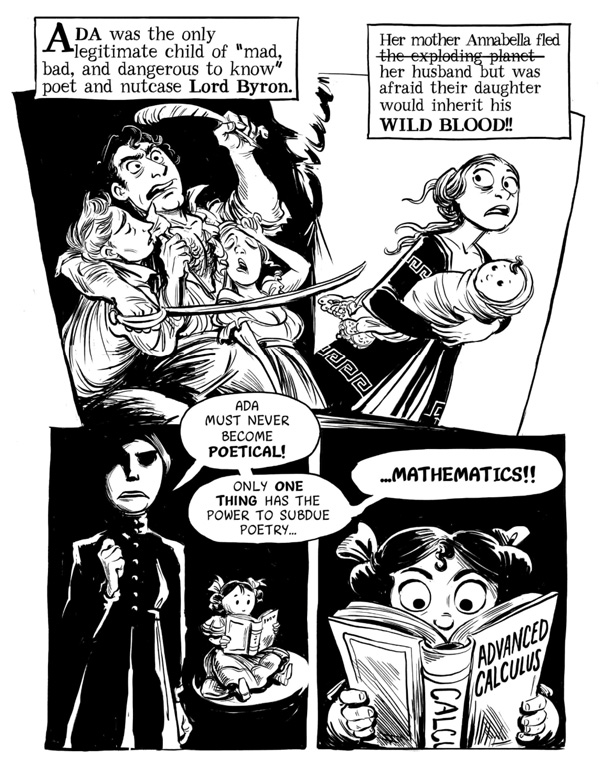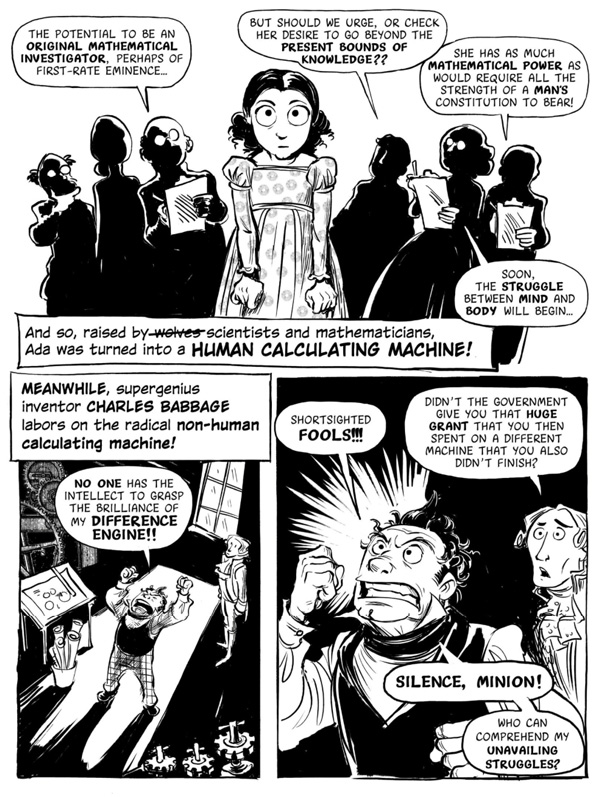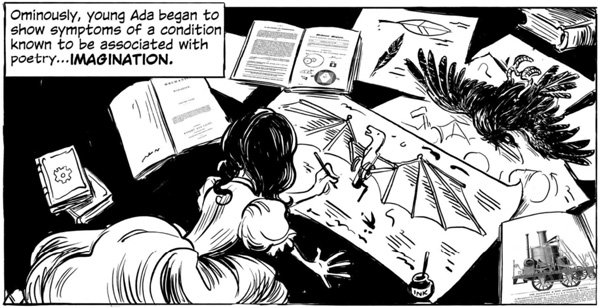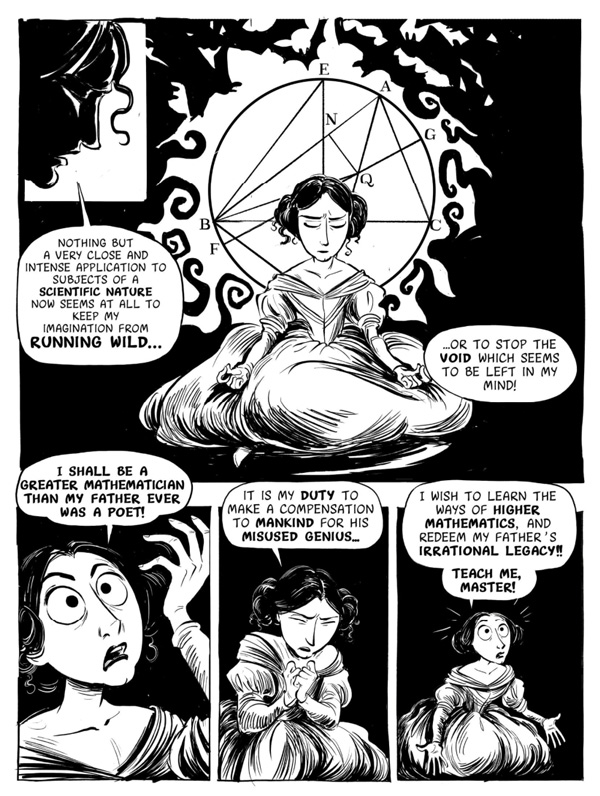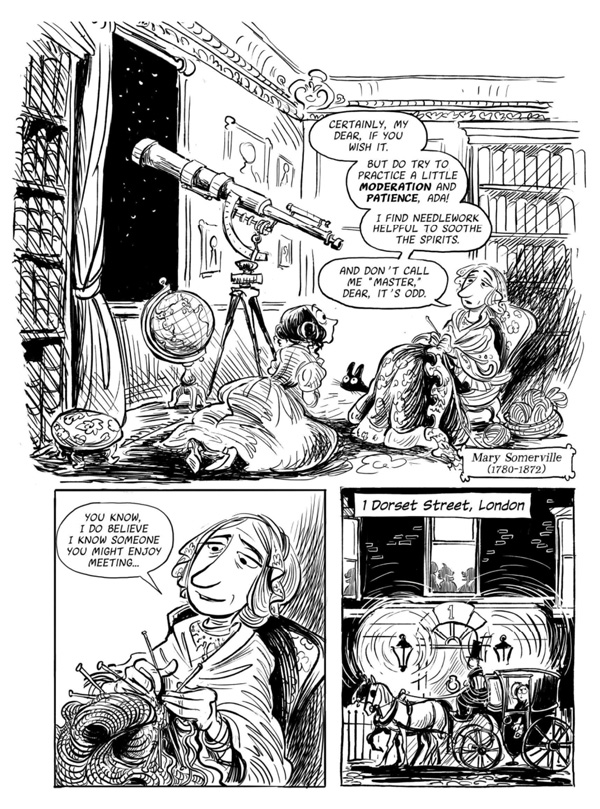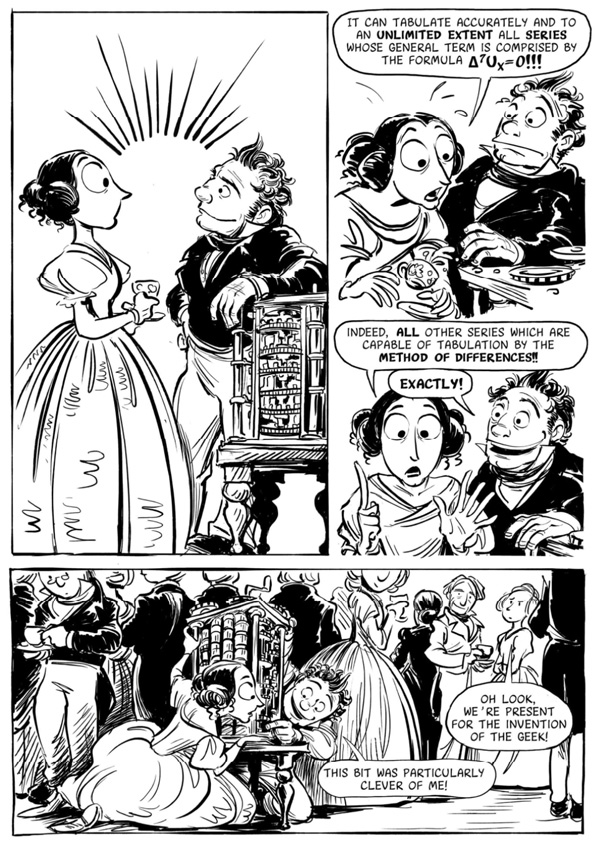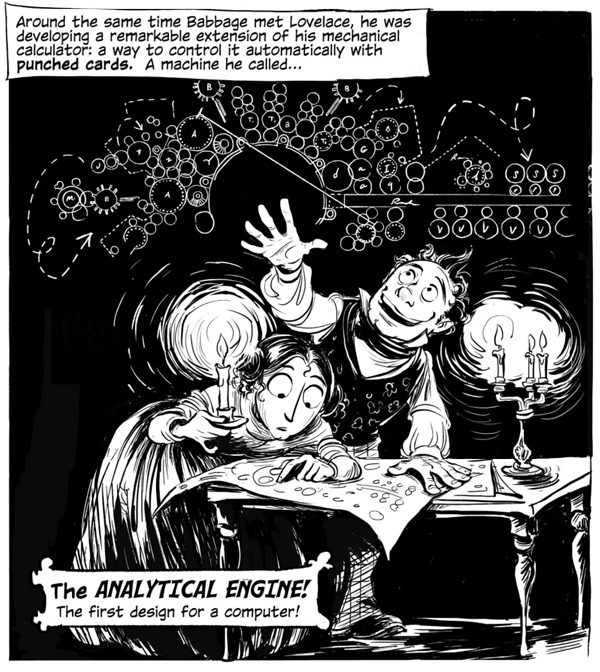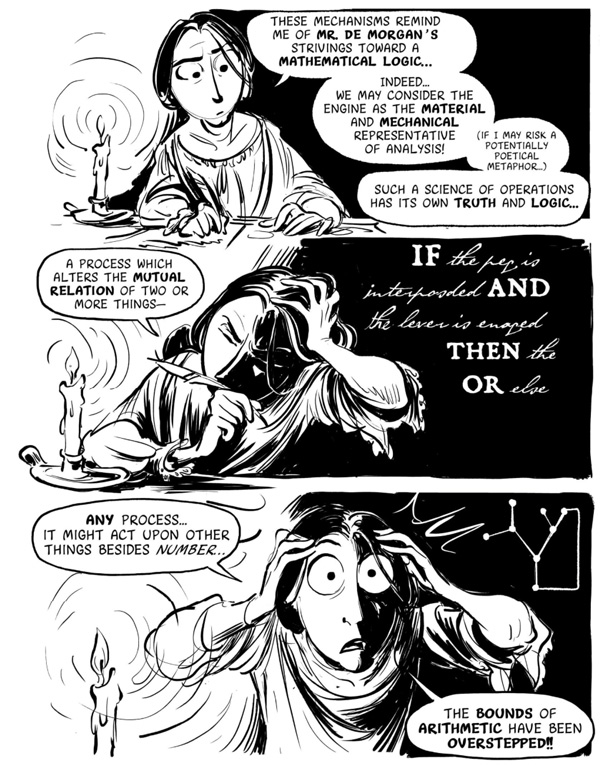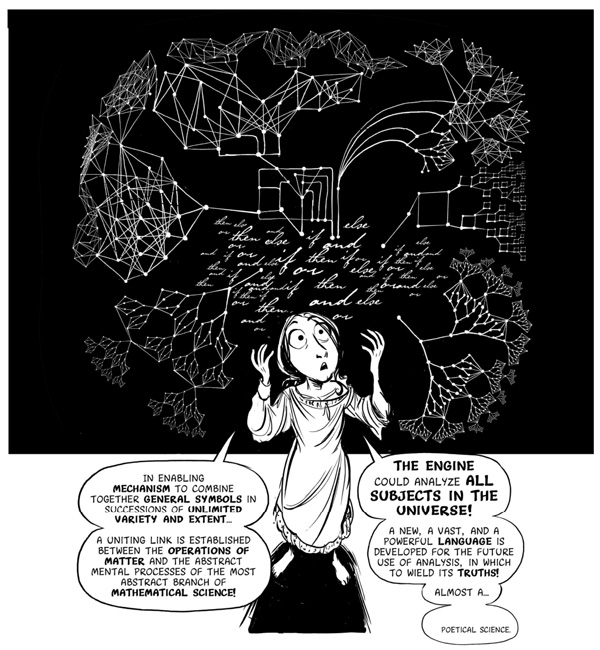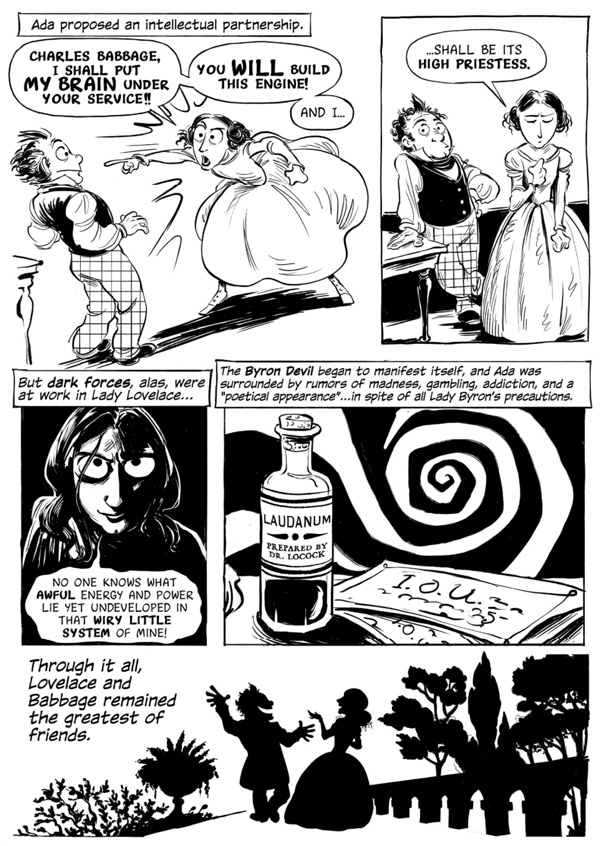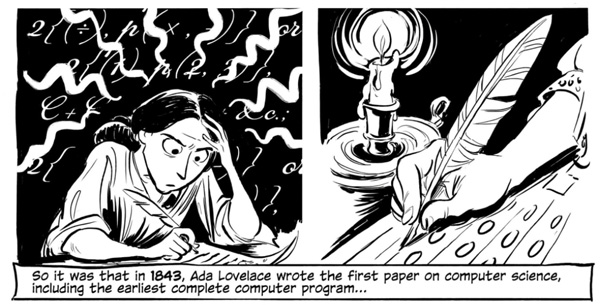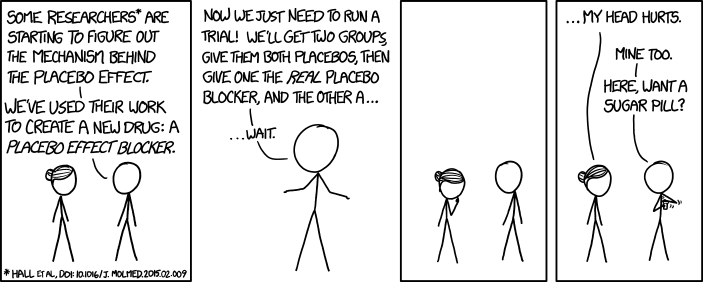The story of how an improbable pair forever changed our horizons of the possible.
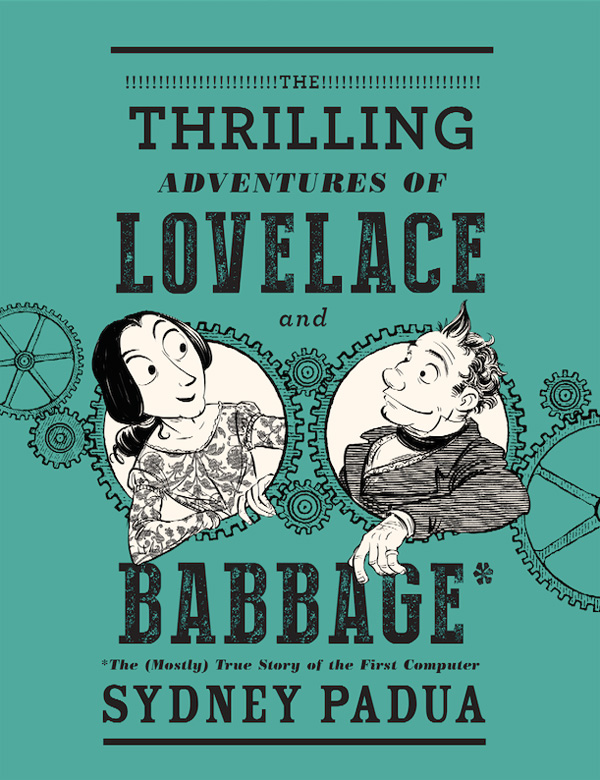 In 1843, Ada Lovelace — the only legitimate child of the poet Lord Byron — translated a scientific paper by Italian military engineer Luigi Menabrea titled Sketch of an Analytical Engine, adding seven footnotes to it. Together, they measured 65 pages — two and half times the length of Menabrea’s original text — and included the earliest complete computer program, becoming the first true paper on computer science and rendering Lovelace the world’s first computer programmer. She was twenty-seven.
In 1843, Ada Lovelace — the only legitimate child of the poet Lord Byron — translated a scientific paper by Italian military engineer Luigi Menabrea titled Sketch of an Analytical Engine, adding seven footnotes to it. Together, they measured 65 pages — two and half times the length of Menabrea’s original text — and included the earliest complete computer program, becoming the first true paper on computer science and rendering Lovelace the world’s first computer programmer. She was twenty-seven.
About a decade earlier, Lovelace had met the brilliant and eccentric British mathematician Charles Babbage who, when he wasn’t busy teaming up with Dickens to wage a war on street music, was working on strange inventions that would one day prompt posterity to call him the father of the computer. (Well, sort of.) The lifelong friendship that ensued between 18-year-old Lovelace and 45-year-old Babbage sparked an invaluable union of software and hardware to which we owe enormous swaths of modern life — including the very act of reading these words on this screen.
The unusual story of this Victorian power-duo is what graphic artists and animator Sydney Padua explores in the immensely delightful and illuminating The Thrilling Adventures of Lovelace and Babbage: The (Mostly) True Story of the First Computer (public library), itself a masterwork of combinatorial genius and a poetic analog to its subject matter — rigorously researched, it has approximately the same footnote-to-comic ratio as Lovelace’s trailblazing paper. The footnote, after all, is proto-hypertext linking one set of ideas to another, and in these analog hyperlinks, Padua draws on an impressive wealth of historical materials — from the duo’s scientific writings and lectures to Lovelace’s letters to Babbage’s autobiography to various accounts by their contemporaries.
Padua begins at the beginning, with Lovelace’s unusual upbringing as the daughter of Lord Byron, a “radical, adventurer, pan-amorist, and poet,” and Anne Isabella Millbanke, a “deeply moral Evangelical Christian and prominent anti-slavery campaigner.”
Determined to shield young Ada from any expression of her father’s dangerous “poetical” influence, her mother instructed the young girl’s nurse:
Be most careful always to speak the truth to her … take care not to tell her any nonsensical stories that will put fancies into her head.
She wasn’t spared the Victorian era’s brutal control mechanisms of women’s minds and bodies. Padua footnotes:
Ada’s upbringing was strict and lonely. She was given lessons while lying on a “reclining board” to perfect her posture. If she fidgeted, even with her fingers, her hands were tied in black bags and she was shut in a closet. She was five years old.
But the best control strategy for the disorderly tendencies of the poetical mind, it was determined, was thorough immersion in mathematics — which worked, but only to a degree.
Lovelace was eventually introduced to Babbage by the great Scottish mathematician, science writer, and polymath Mary Somerville — for whom, incidentally, the word “scientist” was coined.
And so one of history’s most paradigm-shifting encounters took place.
Implicit to the story is also a reminder that genius is as much the product of an individual’s exceptional nature as it is of the culture in which that individual is nourished. Genius leaps from the improbable into the possible — the courage of the leap is the function of individual temperament, but the horizons of possibility are to a large extent determined by the culture and the era.
Lovelace lived in an age when it was not only uncommon but even discouraged for women to engage in science, let alone authoring scientific paper themselves. In another illuminating footnote, Padua quotes from Babbage’s autobiography, capturing Lovelace’s dance with this duality of possibility and limitation perfectly:
The late Countess of Lovelace informed me that she had translated the memoir of Menabrea. I asked why she had not herself written an original paper on a subject with which she was so intimately acquainted? To this Lady Lovelace replied that the thought had not occurred to her.
And yet groundbreaking thoughts that hadn’t occurred to others did occur to Lovelace.
So immersed was Lovelace in her computational poetics that her contemporaries described her as rather “poetical in her appearance,” which, for those unversed in Victorian euphemism, Padua translates to mean “depressed-looking and extremely badly dressed.” Her mind operated on a level so far beyond the ordinary as to be barely graspable by common imaginations. Padua explains in another footnote:
In an age before the mathematization of logic (Boole’s Foundational laws of Thought was still ten years away) this was a truly extraordinary leap of imagination — it is difficult, maybe, for us in our computerized age to grasp how extraordinary. Babbage had not thought beyond calculating numbers with his machine, but he loved what he called “admirable and philosophic view of the Analytical Engine” — “The more I read your Notes the more surprised I am at them and regret not having earlier explored so rich a vein of the noblest metal.”
Lovelace herself spoke to that fruitful cross-fertilization of the poetic, the philosophical, and the scientific in her famous proclamation in a letter to her mother penned shortly before her footnote masterwork:
You will not concede me philosophical poetry. Invert the order! Will you give me poetical philosophy, poetical science?
In the remainder of The Thrilling Adventures of Lovelace and Babbage, layered and wonderful in its totality, Padua goes on to chronicles the power-duo’s tragicomic demo of the Analytical Engine for Queen Victoria, explores how their different temperaments mapped onto the complementary archetypes of the inventor and the entrepreneur — Babbage was the obsessive and perfectionistic tinkerer, Lovelace the one with the fail-forward startup spirit — and delivers a thoroughly unsynthesizable range of enchantment and elucidation. Complement it with Lovelace’s spirited letter on science and religion, then revisit these lovely illustrated biographies of great minds.
Thanks, Michelle
Donating = Loving
Bringing you (ad-free) Brain Pickings takes hundreds of hours each month. If you find any joy and stimulation here, please consider becoming a Supporting Member with a recurring monthly donation of your choosing, between a cup of tea and a good dinner.
You can also become a one-time patron with a single donation in any amount.
